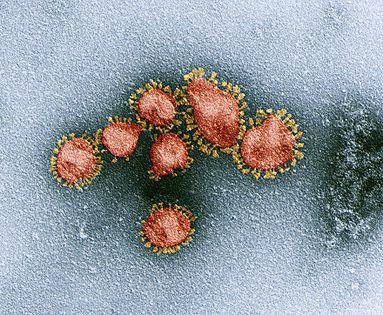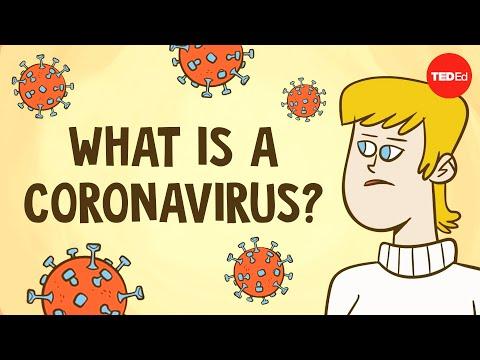SARS & Other Coronaviruses
Severe Acute Respiratory Syndrome
A BRIEF OVERVIEW
SARS-CoV is the virus responsible for the disease, SARS. It is one of seven types of coronaviruses that can infect humans.
Coronaviruses are classified together on the basis that their surface is haloed in spikes, like those on a crown (corona meaning ”crown” in Latin).
Their body is spherical in shape and roughly 125 nanometers wide (~1/600th the size of a strand of hair).
As a virus, they need a living host with active cells, like humans, to survive and propagate. They travel through respiratory droplets that are spread when a person coughs or sneezes, for example.
And while they’re smaller than anything we can see, if those droplets enter our mouth, nose, or eyes, the virus uses its crown-like spikes to attach to normal cells and multiply, causing us to experience flu-like symptoms.
Other types of coronaviruses seen in recent years include MERS (Middle Easy Respiratory Syndrome, 2012) and the novel COVID-19 (Coronavirus Disease, 2019), but SARS marked the beginning of those global battles. It was first noticed in China in 2002, and supposedly manifested in animals such as bats, palm civets, and birds before jumping onto what became more than 8,000 humans in over 24 different countries.
Luckily, SARS has not been diagnosed since 2004, but other types of coronaviruses still exist today.
 Connection to Wastewater
Connection to Wastewater
Unlike diseases that thrive in water, SARS does not mainly transfer that way, although we know it has the potential to do so.
SARS-CoV can be excreted through our stool and contaminate water.
When the outbreak occurred in 2003, over 300 residents in Hong Kong were infected with SARS due to faulty sewage systems that facilitated the virus’s transmission between apartments.
This is one reason why treatment plants like Central San are so important—they use chemicals to kill germs, like viruses, in a community’s wastewater to ensure that people, animals, and the environment don’t get infected.
Sources
Chan‐Yeung, M., & Xu, R. H. (2003). SARS: epidemiology. Respirology, 8, S9-S14.
Acter, T., Uddin, N., Das, J., Akhter, A., Choudhury, T. R., & Kim, S. (2020). Evolution of severe acute respiratory syndrome coronavirus 2 (SARS-CoV-2) as coronavirus disease 2019 (COVID-19) pandemic: A global health emergency. Science of the Total Environment, 138996.
Websites:
Wikipedia: https://en.wikipedia.org/wiki/Severe_acute_respiratory_syndrome_coronavirus
Johns Hopkins Medicine: https://www.hopkinsmedicine.org/health/conditions-and-diseases/severe-acute-respiratory-syndrome-sars
Minnesota Department of Health: https://www.health.state.mn.us/diseases/sars/basics.html
The Centers for Disease Control and Prevention: Severe Acute Respiratory Syndrome (SARS): https://www.cdc.gov/sars/clinical/guidance.html
The World Health Organization – Plumbing: https://www.who.int/mediacentre/news/releases/2003/pr70/en/
The World Health Organization – SARS Laboratory Diagnostic Tests: https://www.who.int/csr/sars/diagnostictests/en/
Center for Infectious Disease Research and Policy: https://www.cidrap.umn.edu/news-perspective/2003/05/estimates-sars-death-rates-revised-upward
United States Environmental Protection Agency: https://www.epa.gov/coronavirus/do-wastewater-treatment-plants-treat-covid-19
Nature: https://www.nature.com/articles/d41586-017-07766-9
Institute of Medicine (US) Forum on Microbial Threats: https://www.ncbi.nlm.nih.gov/books/NBK92478/

